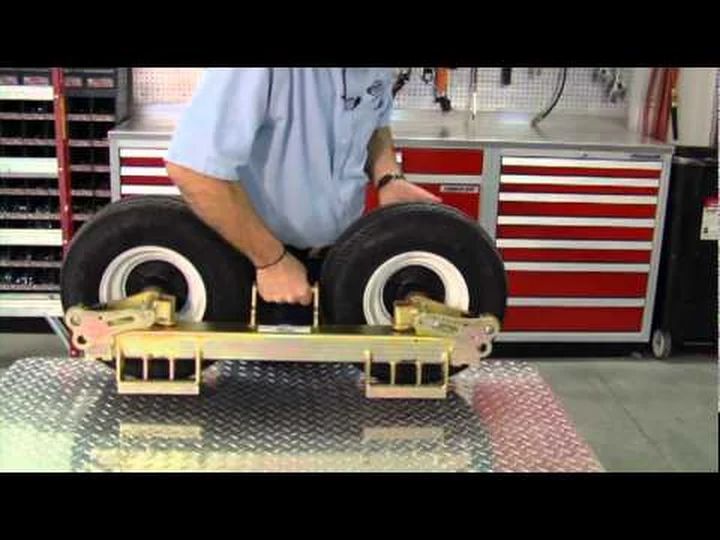GTC-Y471105HD
Gaither Wheel Dolly for 6.5" to 24.5" Wheels
$179.95
9 reviewsGTC-Y471106
Gaither SAFERGO Truck Wheel Dolly For Mobile Service
$545.00
4 reviewsTSI-TW2000
TSI TW2000 Tweel Handler Truck Wheel Dolly
$1,625.00
AC-WT1500NT-B
AC WT1500NT-B Wheel Trolley For Farm, Construction Tire
$4,695.
00
GTC-Y472270
Gaither Wheel Assist Gen2
$1,035.00
1 reviewESC-70134
Esco 70134 HD Adjustable Wheel Dolly
$194.95
2 reviewsESC-90538
Esco COMPAC Wheel Dolly For Agricultural and Earthmover Tires
$3,959.95
1 reviewTSI-S-25
TSI Tire Dolly
$1,720.47
HW-93766
Hein-Werner 3/4 Ton Wheel Dolly - HW93766
$1,345. 00
00
ESC-70130
Esco 70130 Truck Wheel Dolly
$109.95
AC-WTA500AP
AC WTA500AP Aircraft Hydraulic Wheel Trolley, 1100 lbs
$2,448.00
OME-47053
Omega Wheel Dolly (3/4 Ton)
$650.00
AFF-3590A
AFF Portable Truck Wheel Dolly
$115.88
AFF-3577
AFF 1500 lbs HD Wheel Dolly
$856.18
AME-71320
AME Super Single Wheel Dolly
$160.00
AME-94110
AME 2400 Wheel Trolley For Big Heavy Tire
$14,760.00
AME-71300
AME Truck Wheel Dolly 71300
$120. 00
00
CHL-CLHMWDh22
Challenger 1,200 Lbs Air/Hydraulic Wheel Dolly - CLHM-WDH-12
$8,700.00
AC-WTK
AME WTK Crane Arm for WTA500AP Aircraft Trolley
$332.50
|
||||
|
Often referred to as a 10” tire, the 4.10/3.50- 4” tire is one of the most common tires for hand trucks, garden carts, pressure washers, generators, and more. It comes standard with a 2.25” offset hub, but we also offer 3” and 4” centered hub lengths for casters and other equipment. Purchase >>
|
||||
|
The #1 swivel and rigid caster tire! This 8" tire is available in two widths to fit all 8" casters. (See 2.50 - 4" for narrow version) This tire is also great for small hand trucks and other carts. This tire is offered with a Jag Tread Pattern and is available on a 2.25" Offset, 3" Centered or 4" Centered hub. Purchase >>
|
||||
|
The #1 swivel and rigid caster tire! This 8" tire is available in two widths to fit all 8" casters. (See 2.80/2.50 - 4" for wider version.) This tire is offered on a 3" centered hub split rim and comes in a Centipede Tread. This tire holds up to 250lbs per tire and costs $25.99. Purchase >> |
||||
|
Measuring 12. Purchase >>
|
||||
|
This tire comes with a sawtooth tread. Purchase >>
|
||||
|
This tire comes with a sawtooth tread. Purchase >>
|
||||
|
Don't know what tire size to buy? Our Universal Fit Flat Free Hand Truck Tire is designed to fit the majority of hand trucks and other small equipment. Diameter = 10.5" Width = 3.3" Load Capacity = 300 lbs. Comes standard with a 2.25" Offset Hub and 5/8" Bearings, but also includes a variety of spacers and bushings to meet the hub and axle configuration you need. (Perfect as a gift!) This tire is rated to 300 lbs and costs $29. Purchase >>
|
||||
There are several methods to indicate the size and parameters of a tire, some manufacturers use sizes in inches, some in millimeters, and some even use both sizes. . The examples below will help you define the parameters yourself.
1. Tire width (cross-sectional width)
2. Tire height
3. Cross-sectional height
4. Rim diameter
5. Tire outer diameter
Example: 3.00-4, 3.50-6, 4.00-8, 5.20-10, 6.00-12…. The first number (3.00) indicates the tire width. “-” indicates that the tire is bias-ply (a radial design would be R). The last digit (4) indicates the bore diameter in inches. So a 3.00-4 tire fits a 4" rim, is 3" wide, and has a diagonal design.
The first number (3.00) indicates the tire width. “-” indicates that the tire is bias-ply (a radial design would be R). The last digit (4) indicates the bore diameter in inches. So a 3.00-4 tire fits a 4" rim, is 3" wide, and has a diagonal design.
Example: 6-12, 7-14, 8-16, 9.5-18…
Same as above, but without the (.00) in the first part of the size. All dimensions are in inches. It is important that tires with similar sizes may not be compatible - a tire with parameters 6.00-12 can be very different from a tire 6-12. If you doubt the definition of compatibility - contact the managers of Promtekhnika.
Example: 4.10/3.50-4, 4.10/3.50-6, 5.30/4.50-6…
This size consists of 4 parts. The first digit (4.10) indicates the tire width. The second (3.50) indicates the height of the tire. The third digit (4) indicates the fit diameter of the tire. “-” refers to the diagonal design of the tire. So a 4.10/3.50-4 tire is 4.1" wide, 3.5" high, fits 4" rims, and has a diagonal design.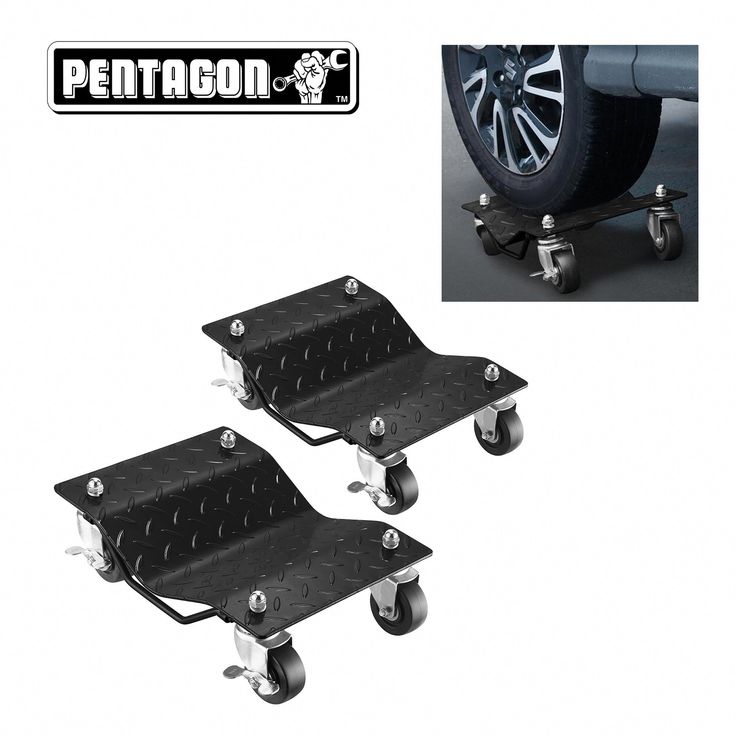
Example: 11x4.00-4, 13x5.00-6, 18x8.50-8, 25x12.00-9…
The first digit (11) is the outside diameter of the tire in inches. The second number (4.00) is the width of the tire in inches, and the third number (4) is the rim diameter of the tire. “-” refers to the diagonal design of the tire. So a 11x4.00-4 tire is 11" OD, 4" wide, fits a 4" rim, and has a diagonal design.
Example: 10x3, 18x4, 260x85
This marking is obsolete, but you may still encounter it. Dimensions can be specified in both inches and millimeters (usually it is quite easy to distinguish this). The first number (10) indicates the outer diameter of the tire, the second the width of the tire. The seat diameter is not indicated in the size, but can be easily calculated, since the height of such a tire usually coincides with its width. Thus, an 18x4 tire has an OD of 18 inches, a width of 4 inches, and a rim diameter of 10 inches (18 inches of OD minus 2" x 4" of tire height). The modern designation for such a tire would be the formula 4.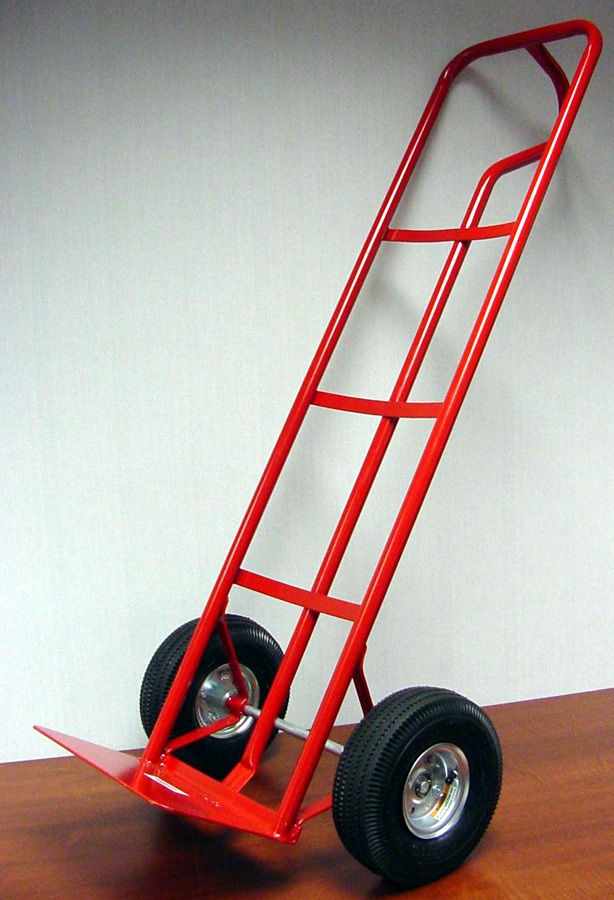 00-10. A tire with a size of 260x85 has an outer diameter of 260mm and a width of 85mm, or 10" and 3" respectively, with a 4" bore. The modern designation would look like this: 3.00-4.
00-10. A tire with a size of 260x85 has an outer diameter of 260mm and a width of 85mm, or 10" and 3" respectively, with a 4" bore. The modern designation would look like this: 3.00-4.
Example: 255/60-10, 195/50R13, 420/85R28
The first digit is the tire width in millimeters, the second is the profile height (percentage of the tire width), the third digit is the bore diameter in inches. If the letter R is present in the size, this means that the tire has a radial design, and “-” indicates a bias. So a 420/85R28 tire has a width of 420mm, an 85% profile (the height of the tire is 85% of the width, i.e. 357mm), a radial construction and fits a 28" rim.
Example: 145R10, 155R12
The first number indicates the tire width in millimeters and the second number indicates the bore diameter (rim diameter) in inches. R indicates a radial construction, “-” indicates a diagonal one. With this marking, the tire profile is not indicated, and by default it is 80%. That is, a 145R10 tire is 145mm wide, 116mm high (80% of 145mm), fits a 10" rim, and has a radial design. The overall tire diameter can be calculated by converting all units of measurement to inches or millimeters and adding the rim diameter to twice the height of the tire.
That is, a 145R10 tire is 145mm wide, 116mm high (80% of 145mm), fits a 10" rim, and has a radial design. The overall tire diameter can be calculated by converting all units of measurement to inches or millimeters and adding the rim diameter to twice the height of the tire.
Currently, the ply rating determines the strength of the tire and does not indicate the number of plies of cord fabric. Originally, the term "ply" did refer to the number of plies of cord fabric and therefore served as an indication of the strength of a tire. But with the development of new materials, the original cotton cord fabric was first replaced by viscose, and now nylon or steel wire is used.
As a result, it is possible to significantly increase strength without increasing the number of material layers. Therefore, the term "number of plies" has come to be used to refer to the strength of the tire rather than to indicate the actual number of plies.
Asterisks (*,**,***) are used to indicate the strength of radial tires.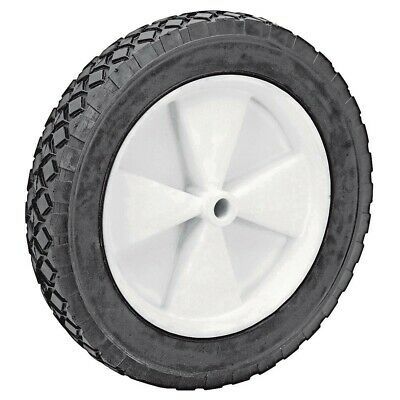
In any trolley, construction or garden, the main working link is the wheel. It is on the type and material of the wheels that are installed in the trolley that depends on how much force will be needed to move it, the load capacity and the service life. The most durable is considered to be molded rubber and polyurethane tires.
The basis of any wheel is a metal rim with a bearing on which the tire is attached. Therefore, they are distinguished not only by the material of the tires, but also by the method of fastening:
The main advantage of cast wheels is resistance to cuts, punctures, side impacts.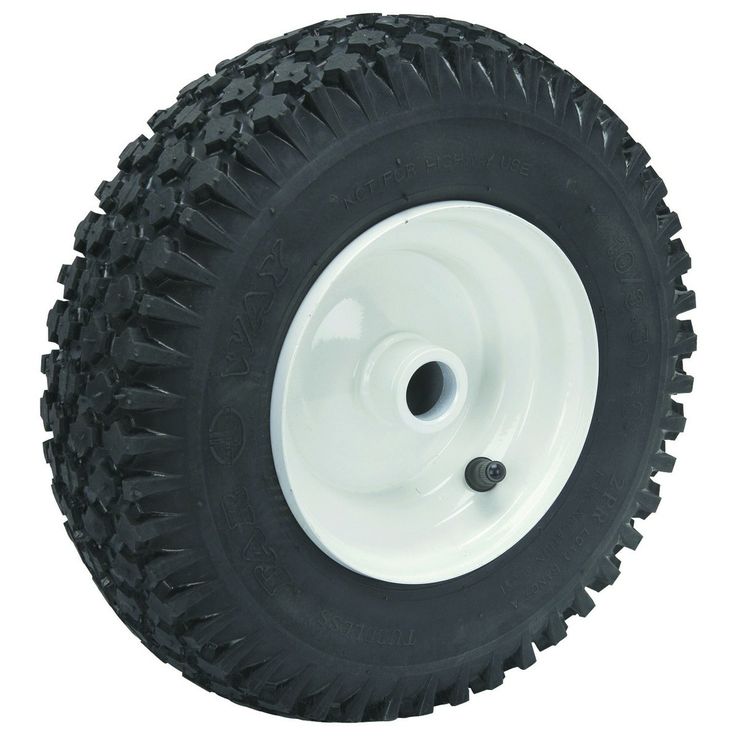 At the same time, their wear resistance is somewhat lower than that of rubber.
At the same time, their wear resistance is somewhat lower than that of rubber.
The main difference between pneumatic and solid wheels is the presence of a hollow rubber chamber located inside the tire. The rim can be steel or cast iron. The tire through the nipple is filled with air to a certain pressure. Due to this, excellent shock absorption is achieved when driving on uneven surfaces, overcoming significant obstacles. Pneumatic wheels are lightweight. It is thanks to these qualities that they are used for installation in garden carts, construction and cargo cars, etc.
Solid (cast) wheels are increasingly used as an alternative to pneumatic. They are a rim made of high-strength steel (ductile or gray cast iron) with a polyurethane or molded rubber busbar. They are distinguished by high versatility and wear resistance: they can serve until the contact layer is completely worn out. Especially important is the use of cast wheels on construction sites, industries, where there are a lot of sharp objects - nails, fittings, screws, pieces of wire and during operation there is a high probability of cuts, punctures.
Each type of wheel has its advantages and disadvantages. First of all, consider the qualities that they possess with equal technical parameters.
Pneumatic:
Cast:

Wheels for solid and pneumatic wheels are made of metal (steel, ductile iron) by stamping, i.e. all-metal. The quality of the rim depends on the metal that was used, as well as on the preliminary anti-corrosion treatment. The steel rim must be protected from corrosion by galvanizing or polymer coating. Solid wheels can be cast in polyurethane.
In the manufacture of wheels, two types of bearings are most often used: rolling (ball) or sliding. The sleeve bearing is suitable for short-term operation and does not withstand heavy loads. With a long and heavy load, the inner surface of the bushing on the axle is worn out, and the course deteriorates significantly, the wheels begin to “eight” and dangle. Under similar conditions, the ball (roller) bearing does not change its course, the wheel remains stable and movable.
Today, the production of wheels is established by both domestic and foreign manufacturers.